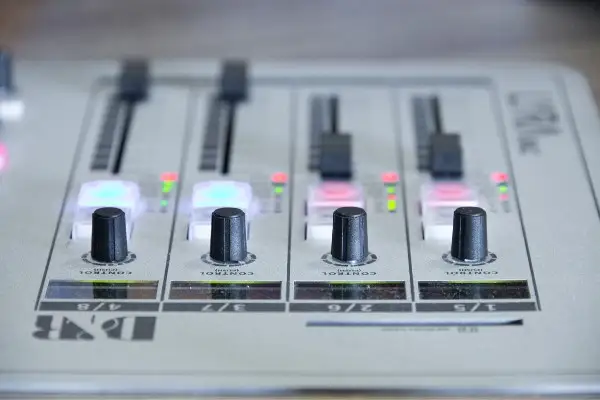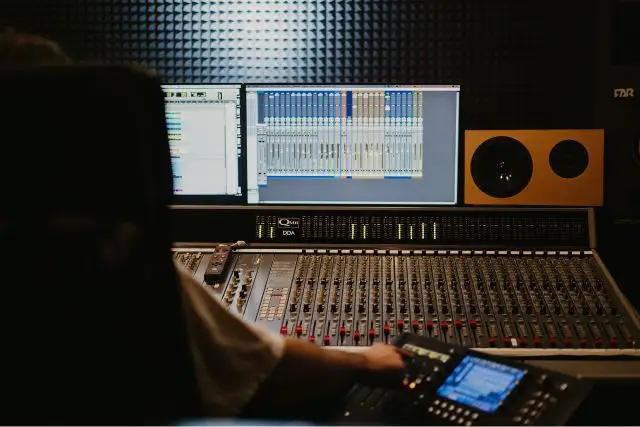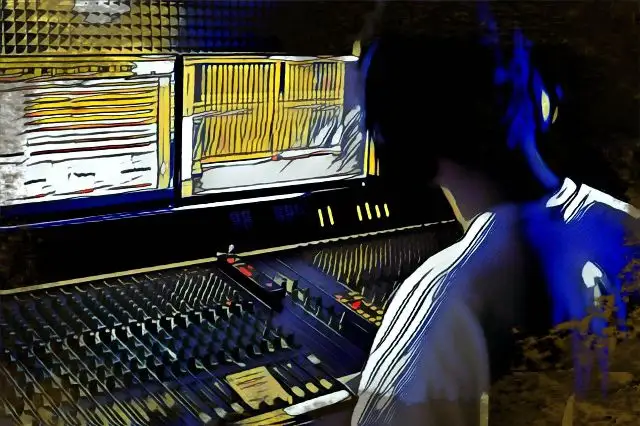Learning how to mix beats is essential for any budding producer or engineer. A good mix can take a good song to great, and ensure that your music sounds good on just about any playback system.
If you haven't mixed beats in the past, the process can seem intimidating. Fortunately, we've put together a guide on everything you need to know to start mixing your beats like a pro. Below, we'll dive into the mixing process and show you how to mix beats from start to finish.
What Is Mixing?
So what is mixing, anyway? As the name suggests, mixing can be boiled down to take the produced and recorded tracks and combine them in such a way that you create a polished song. Just as you have specific ratios of ingredients to a recipe, mixing engineers decide how much or how low little of each track is represented within a mix.
Learning how to mix properly is a lifelong journey, though there are plenty of free resources and references to help you along the way.
In this guide, we'll be breaking down how to mix a beat, but this general framework can be applied to mixing entire tracks.
Understanding The Flow Behind Mixing
Before we dive in headfirst, it's important to understand the general flow of mixing. In general, mixing and audio processing can be broken down into two processes: Subtractive and additive. As the name suggests, subtractive processes involve taking components away while additive refers to adding on top of what you've already built.
You want to start off mixing your beat with subtractive processes. This means editing your audio clips, removing imperfections, or soothing unwanted harmonic frequencies. From there, you can start to build your chain. Remember that all processes build off of each other, so any preset added onto another will amplify the effects that occurred earlier in the chain.
Quick Tip: Make Sure You Have The Right Equipment
Your mix is only as good as your references. Before you delve into the mixing process, it's essential that you have the right tools for the job. You should have studio monitors and headphones as your main playback devices.
Note that typical headphones marketed towards the everyday listener won't be sufficient. Most of these headphones have an altered frequency range so that won't be a clear reflection of your mix. A distorted output leads to a distorted mix.
How To Mix Beats In 7 Steps
Are you ready to start mixing your beats? Use this framework to produce polished mixes:
Preparing Your Mix and Find A Reference
Before you do anything to your mix, you need to do some prep work. You should organize your tracks by naming each one and placing similar tracks near each other. For instance, all of your drum sounds like a kick drum, snare drum, and hi hat should be named accordingly and relatively close to one another.
It's also a good idea to find a reference track. Having a tight reference will make it easier for you to build a great mix since you'll have a convenient source to compare and contrast against. You'll also want to gain stage your tracks and make sure you provide enough headroom to really hear what you're doing.
Remember that mixing engineers usually leave three to six decibels of headroom on the master channel, so keep this in mind while mixing to prevent clipping and produce a track ready for the mastering stage of the process.
Start Fresh
Once your mix has been prepared accordingly, it's time to cut out what you don't need. Have low frequencies clogged up your mix on the hi-hats? Notice harsh harmonic frequencies? Cut them out! Use EQs and gate plugins to refine and clean up your sound so that your tracks are only full of sounds you'd like to amplify as an artist.
Balance

One of the best mixing tools any engineer has at his or her disposal is the volume level of any individual audio signal. You'd be surprised at how much of a difference balanced mixer channels can have on your song as a whole.
Start off by adjusting the levels of audio tracks on your mixer channel to create a unified sound at a maximum volume that still provides plenty of headroom for future stages in the process. This will also help you be decisive about which bits of your beat will be expressed softer vs louder. Remember that not all sounds can be consumed at full blast, so you'll have to be deliberate about your leveling decisions.
Drums and Bass Sounds
In many genres of music, the drums, bass, and vocals end up being some of the most important parts of the song. This is because these elements tend to set the rhythm or pace of the track, so it's key to give them some extra TLC.
Many mixing engineers swear by starting with mixing the drums first as a groove and then working on the relationship between the drums and the bass. Setting this context can be challenging since drums and bass often occupy similar low-end frequencies, but if you can build a great balance, your mix will be off to a great start.
For a punchy kick, consider using sidechain compression to duck out amplitude from the bass whenever the drums come in. You also might need to cut out certain frequencies from one instrument group or another to make real space for that low end to shine. Humans hear low-end pretty well, so it's easy for this area to become oversaturated.
Other Instruments and Effects
Once you've built a good foundation by focusing on the relationship between the drums and bass, it's time to start bringing in other instruments. The same principle of volume levels coming first still applies - before adding any effects to your mixer track, work on creating the best balance possible in context with the rest of your mix.
At this stage, you might start adding in other effects like reverb, delay, and distortion. These instruments can be more spacious across the mix, and you can play with panning to one side or the other! You may decide to use methods like parallel processing to provide you with full control over the effect processing in your mix.

Mind Your Frequencies
It's easy to cloud your mix quickly. Therefore, you'll need to be mindful of how your tracks work in relation to one another. Test your bass parts with your drum sounds. Test those parts with your vocals. Do you need more space? Track down the instruments or sounds that take up too much room in the mix and edit to make space for new frequencies.
A lot of mixing comes back to guessing and checking. Mixing isn't always very linear and you should constantly be reevaluating your mix against your reference.
While you should always start with subtractive audio processes, note that effects and edits can change the character of your mix drastically. Don't be afraid to step in and edit the frequency ranges that are leading your mix to feel unbalanced. The human frequency spectrum is limited - don't add unnecessary noise.
Test Your Mix
Finally, it's time to test your mix in full! Listening to your mix in context is key since mixing isn't just about making sections of your beat sound professional, it's also about the flow from one section to another. You should test your mix on studio monitors and headphones, but also in the car, on your AirPods, or anywhere else you regularly listen to music.
Whether you're building a hip-hop or pop beat, you'll probably notice one or two tweaks during this stage of the process. This is completely normal! You will have to go back to the drawing board, but rest assured, this is commonplace for any engineer. With enough patience, practice, and persistence, your beat is bound to sound great in time!
I've Mixed My Beat - Now What?
If you've made it through the mixing process, it's time to move on to mastering! This process takes your mix and processes it using a limiter and other tools to bring out the best in your mix and create the right balance for different music platforms. You can use a service like Emastered to master your track at the right output level for streaming and beyond.
How To Mix Beats FAQ
Are you still struggling to make your beats sound good in the mix? Check out these commonly asked questions and answers to help expand your understanding:
What does it mean to mix a beat?
When you mix a beat, you a working with individual track dynamics and presentations with the goal to make your completed beat sound as balanced and polished as possible. Mixing a beat means adjusting volume, and dynamic range, editing tracks, and adding effects and plugins to earn a more cohesive sound.
Is mixing a beat hard?
Mixing beats can take plenty of practice, especially since mixer tracks can be played in a variety of environments. However, in time, you can certainly sound professional by honing your craft and taking in feedback.
Where do you start when mixing a beat?
When you're mixing a beat or anything for that matter, it's important to start by editing what you don't want out of tracks first. Everything you add on top of a track will amplify all the sounds before it, so it's best to commit to subtractive processes first.
Every beatmaker should know how to mix their music. While it might not be as exciting as the production stage, mixing can be just as creative of a process and helps bring out the best parts of your music. Have fun mixing your beats!





